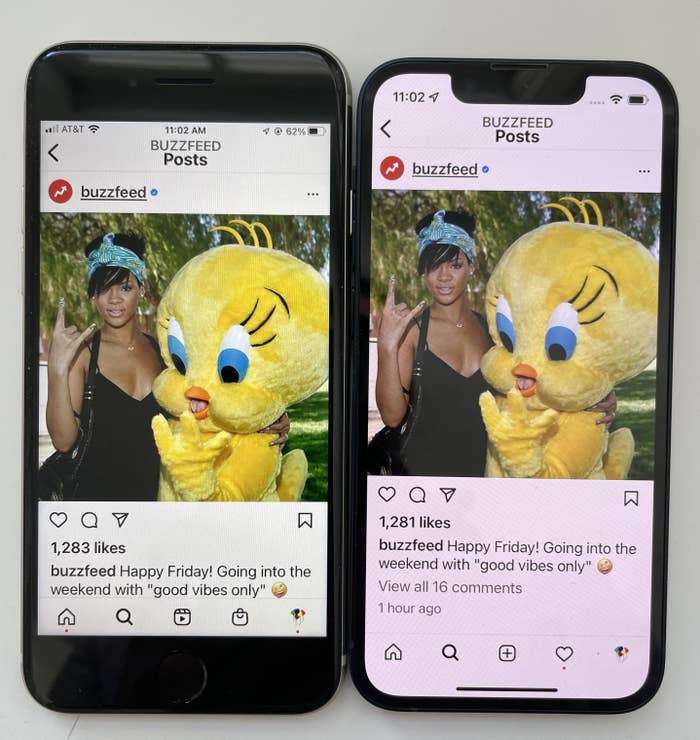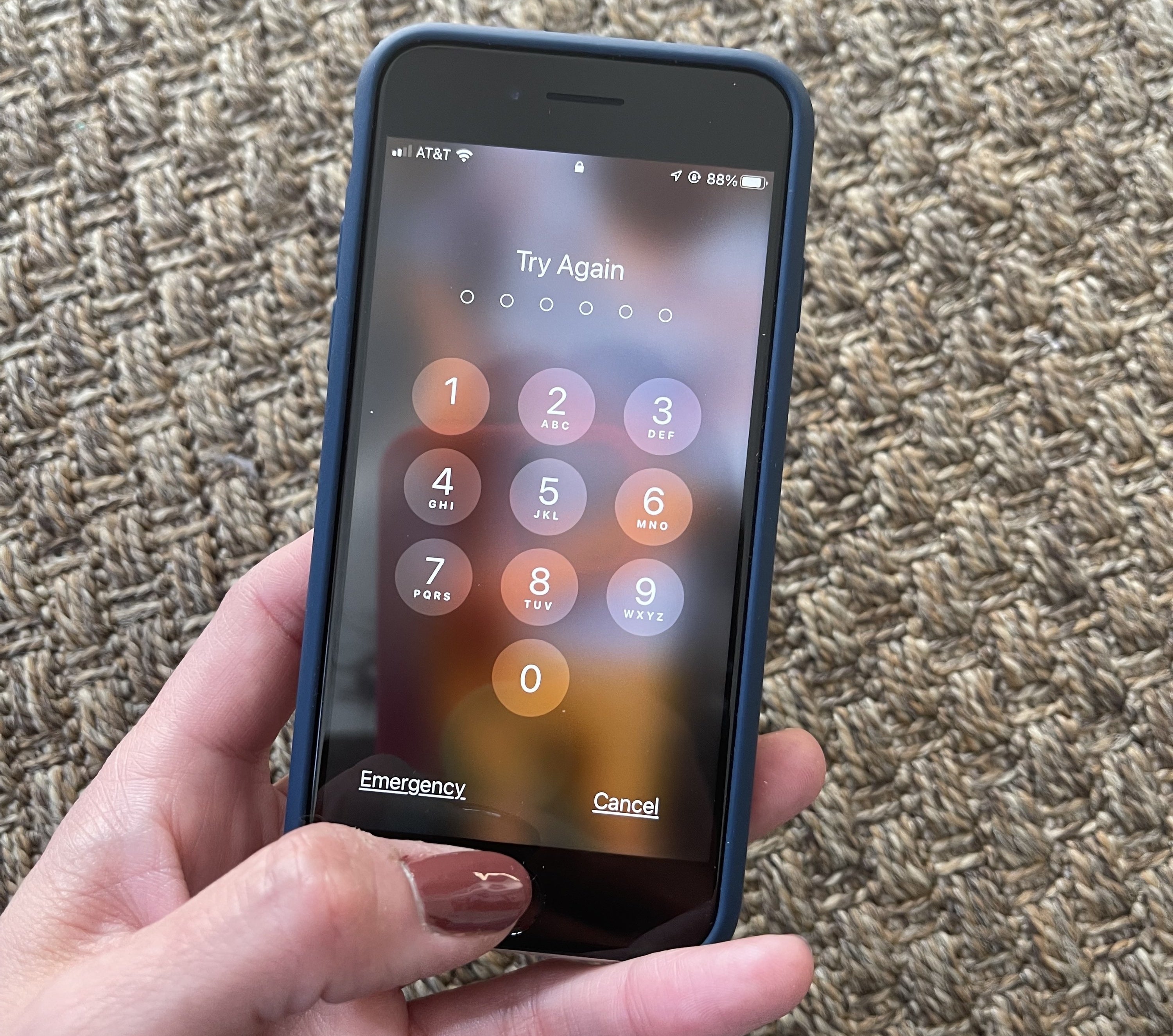iPhone SE is taller than the iPhone 13 Mini, but with less screen.

The new iPhone SE costs $429, which is significantly cheaper than any of the other latest Apple models. So if price is your top priority (and unless you’re Elon Musk, price on a new iPhone is important — they’re all really expensive!), the SE should win.
Well, sort of. Depending on your situation — what carrier you use and if you have an older iPhone or other smartphone to trade in — you might be able to get a better device for the same price or less. Which makes the iPhone SE a really confusing option right now. It’s got the nice small size, a home button (!!!), and a bunch of improvements from the previous SE version — but it’s still not as good as the latest iPhone 13 Mini.
For the last few years, pricing on iPhones has been fairly clear: Older phones are cheaper or even free; the newest ones are more expensive. But the new SE added to the lineup throws a wrench in this.
For example, you could trade in a 2018 iPhone XR to AT&T and get a free iPhone 13 Mini. The full retail price of the 13 Mini is $699, which is $270 more than the SE — not an insignificant amount.
Here’s where it gets even more confusing for the buyer: The trade-in values are going to differ if you do it through Apple or through a carrier like AT&T. If you really prefer the SE, AT&T doesn’t offer any trade-in discounts on the new model, but if you order directly from Apple, you can sometimes get a significant trade-in discount.
Trade-ins aren’t the only way to get a free iPhone. If you’re willing to switch providers, people who are eligible can get a free iPhone 12 right now at Verizon, for example (full retail price of $699).
Basically, if cost is the main thing you’re making a decision on, the SE isn’t necessarily the best option for you. Shop around.

However, the SE has one feature that may be the thing you want most in the world: a home button. This also means it uses Touch ID instead of Face ID.
Going back to Touch ID after several years of Face ID was like getting together with a lost love and then realizing why you broke up in the first place because together you’re a toxic combo. At first, I was excited when I remembered the feeling of not having to actually angle the screen at your face to turn it on — a welcome sensation. But then I recalled how often I ended up wiggling around my finger several times and still failing, and how somehow when it’s bitter cold out your fingerprints seem to disappear.
The biggest issue with Face ID over the last two years is that it doesn’t work with a mask. An update for iOS that will roll out this week will be able to scan your masked face. This will be great, but it feels two years too late. Even without the mask issue, Face ID was often stymied by sunglasses.
On the other hand, Touch ID was annoying during the wintertime while wearing gloves. Perhaps which version you prefer — Face ID or Touch ID — depends on what climate you live in: mostly gloves or mostly sunglasses.
The agony of Touch ID failing

The SE is a nice little phone. It’s fine. The chip is the same as more expensive phones, and it has 5G and improved battery life (17 hours, which is 2 hours longer than the previous SE version, but still less than the other iPhones).
The camera is decent — the A15 chip means that a lot of the digital processing that touches up colors is the same. But with only one lens, it can’t do the ultrawide, telephoto, or night mode that other iPhones can do. And for video, the cinematic mode (portrait mode for video) isn’t available. The SE’s camera is fine if the camera isn’t the main thing you love about an iPhone. Lots of the incremental updates and tweaks to the iPhones over the last few years have been improvements to the camera, so not getting all the latest advantages with the dual cameras seems a bit of a bummer.
If what you’re most excited about from the SE is that it’s small (basically the same size as an old iPhone 6), you’re not alone. Small-handed people crave the size of the older iPhones (and have been holding onto those more compact models, progress be damned). But the latest Mini (5.18 inches tall) is even smaller than the SE (5.45 inches tall). And even though the device is shorter, the actual screen display is bigger, since the SE display doesn’t go all the way to the top and bottom.
The Mini also has the super-durable ceramic shield glass for the display, which the SE lacks. If you’re someone prone to dropping your phone, this could be a big deal — and worth paying the extra money for the retail price if you figure that it will save you having to replace the screen at some point. Speaking of screens, the SE’s screen is LED, which definitely doesn’t look as rich and sharp as the latest OLED screens on other phones.
Overall, the SE feels like a huge step back in time — and not necessarily in a good way. There are some comforts to the home button, and the small size reminded me of what it felt like to use a phone that I’m able to hold in one hand without needing a PopSocket. But the nostalgia isn’t enough. If you can get a good deal on any other iPhone, it’s worth it to upgrade for more features.
